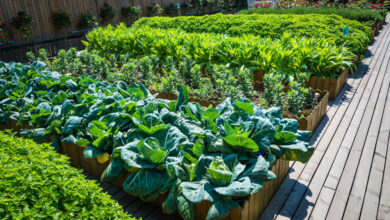
7 Steps to Getting the Perfect Lawn
Image Credit: Photo by Nomadsoul1 on Freepik
A perfectly green lawn is the desire of many homeowners. The last thing anyone wants right outside their house is a brown, thin, and unhealthy lawn. It is unsightly and makes a bad first impression on home visitors. However, with the right effort and consistency, you can change your lawn into a dazzling green and healthy tuft. You must consider it like any other plant or project that requires consistent care and attention.
1. Start by Choosing the Right Species
You may have been putting both funds and efforts into lawn care, but your efforts do not seem to bear any lovely-looking grass for your lawn. This is because you probably chose a grass species that does not do well in your locality. The moisture levels, temperature, soil type, and drought resistance are crucial factors in determining whether your grass will grow.
Consider replacing the grass on your lawn with a hardier species that is better suited for the climate in your area. Hardiness is especially important if your lawn sees a lot of foot traffic from pets and kids and extended periods of hot, dry weather.
2. Consider Carrying Out Soil Solarization
As the name suggests, solarization exposes the soil on your lawn to the sun. This procedure involves clearing the soil surface, moistening it with water, and covering it with a clear tarp. The sun’s energy will get trapped underneath the tarp and bake the soil.
This procedure is best done in the summer and should help get rid of harmful bacteria, fungi, and weeds. Before replacing the grass, this procedure should provide a cleaner slate for the new tuft.
3. Prepare the Dirt Adequately for Planting
Now that your soil is rid of harmful pathogens that restrict the growth and health of your lawn, it is time to prepare the lawn for planting. You want to enrich the newly baked dirt with organic matter to improve soil structure and drainage.
Add about two inches of compost or other organic matter to the top ½ foot of soil to enrich it. Proceed with adding a starter fertilizer to the top four inches of soil to encourage the formation of deep roots and plant health. For every 500 square feet of lawn, use 10 pounds of 5-20-10 or 5 pounds of 10-20-10 fertilizer.
4. Use the Right Mowing Techniques
Once your lawn is established, mow it once a week during its active growing season and once a fortnight during its dormant growing phase. Every grass species has the right height at which you should maintain it to ensure healthy and deep root development, which improves the grass’s resistance towards drought and foot traffic and helps with lawn weed control.
Generally, do not cut more than a third of the blade, mow high. You also need to keep your mower blades sharp to avoid tearing the grass, leading to a grayish-brown lawn.
5. Provide Adequate Water
Lawn watering is essential for healthy grass, and you must find the balance between too much and too little. Water-logged grass often looks black and yellow due to fungal diseases and has shallow roots. Water-deprived grass is brown, weak, unhealthy, and has poor root formation.
Apply water only after your lawn has dried out to a 6-inch depth to encourage healthy root development. Also, water the grass in the morning so that the sun dries the grass, keeping water away from the leaves where fungi can develop.
6. Add Fertilizer Regularly
Lawn treatment with fertilizer provides lawn grass with the nutrients it needs to withstand excessive temperature changes, disease, and weeds, and should keep it growing fast and thickly. Ensure you provide just enough fertilizer, as again, too much fertilizer will make the leaves start to yellow and die.
The species of grass you planted and general soil composition should guide you in determining the right lawn fertilizer quantity. Also, avoid adding fertilizer to grass in its dormant phase, as it cannot take up nutrients then.
7. Dethatch Your Lawn Annually
Thatch builds up the stems and root networks of healthy grass and starts blocking access to water and fertilizer. Thatching should eliminate this competition and improve grass appearance, color, and growth rate. You can use hand-held or power lawn equipment to dethatch your lawn.
A lawn is a perfect way to incorporate nature into your compound, spruce up your exterior, and get your neighbors talking about your home. With the seven tips above, you are well on your way to owning the perfect lawn. If you have any tips or suggestions, share them in the comments section.


